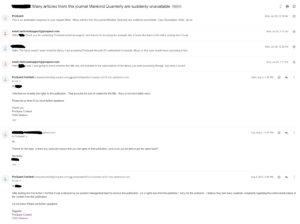So, after posting the previus post i started reading about seasteading. its really interesting. here ar som mor links
https://en.wikipedia.org/wiki/Seasteading
useful overview, lots of links to sources
http://www.wired.com/techbiz/startups/magazine/17-02/mf_seasteading?currentPage=1
mainstream introduction to the subject
http://gramlich.net/projects/oceania/seastead1.html
a pragmatic approach to seasteading. very much worth reading. about 25 pages.
https://en.wikipedia.org/wiki/Blueseed
a commerciel approach
http://www.seasteading.org/book/seasteading-book-beta/
the book about seasteading, currently in a beta. apparently only in web format, which makes it annoying to read.
much mor like it! a phd thesis that analyses seasteading. looks very promising. 300 pages.
from the thesis:
PREFACE
The idea surrounding floating cities is a topic that has been part of the collective
imagination since the nineteenth century. It has been addressed by diverse fields both in science
and in the arts (engineering, architecture and literature) particularly during the twentieth century,
when it was realized that the technology had been developed to take on such a challenge.
Nonetheless, in many instances, the proposals lacked realistic foundations, and appeared
to be motivated simply to seek media attention for their proponents.
This dissertation seeks to address this by providing a framework on the topic regarding the
concept of “floating cities” by questioning why it is that humanity has sought to establish such
cities.
We avoid the media-coined term “Floating Cities” and instead use a different term with a
wider context, “Oceanic Colonization”, which we have defined as “the establishment of offshore
autonomous communities aboard artificial platforms.”
Additionally, we have distinguished four types of oceanic colonization for four different and
distinct objectives:
1) expansion of landholdings; 2) mobile settlements; 3) semipermanent mobile settlements
to access marine resources; 4) and the creation of micronations.
It is this fourth category that will guide the review of the whole issue of ocean colonization.
The dissertation’s objective is to “analyze possible (current and future) options available to
the discipline of Naval and Oceanic Engineering for the establishment of offshore autonomous
communities that would allow for the creation of oceanic micronations.
At the same time, we shall attempt to explore the future evolution of the three other
objectives of oceanic colonization.
In Part I- State o f the Art, we seek to review the most ambitious oceanic colonization
projects espoused toward the creation of oceanic micronation (such as the Principality of Sealand)
as well as those proposed by professionals outside of the Naval and Oceanic disciplines with
apparently media-seeking proposals (such as the “Green Float” espoused by Shimizu Corporation).
We shall point out that these vain attempts have failed as they have not taken into account
a series of requirements which shall be examined in Part II of this dissertation.
In Part II, Set-up and Challenges, we develop four essential requirements that need to be
fulfilled by any oceanic settlement:
1) economic and commercial, 2) technical specifications surrounding the platforms, 3) legal
and external relations, and 4) self-government and internal relations.
These requirements are common to all four forms of oceanic colonization though the steps
to achieving them are distinct and different for each one.
The research behind this dissertation is focused on the technical and legal requirements
(requirements 2 and 3) to create a micronation in the oceans.
To this effect, we researched existing platforms.
Thus, in Part III-Results, we present the review performed on the various platforms used in
the three first forms of oceanic colonization identified and that best conform to the creation of
oceanic micronation including the legal nuances related to them.
The platform types reviewed included cruise ships and residential offshore and inshore
flotels; also those termed as Very Large Floating Structures or VLFS and the offshore concrete-
based structures.
At the conclusion of this section, we shall analyze the legal and regulatory requirements of
oceanic colonization from the perspective of maritime law.
In Part IV- Results Analysis, we shall examine future trends of the four forms of oceanic
colonization postulated.
We allocate greater detail to the review of oceanic colonization to form micronations
based on the various platforms reviewed, and we provide a proposal of timelines and hypotheses
as to how we see this form of colonization evolving.
Lastly, in Part V- Conclusions, we shall conclude that the oceanic colonization and the
creation of micronations in the future is a result of the evolution of the other three forms of
oceanic colonization:
1) expansion of land holdings, where the solution via VLFS appears to be a viable alternative,
2) mobile settlements (where the primary venue shall be cruise ships that will be converted into
mobile-floating-ship-cities and 3) the establishment of permanent oceanic settlements to access
marine resources that will require permanent floating cities in order to best extract them.
